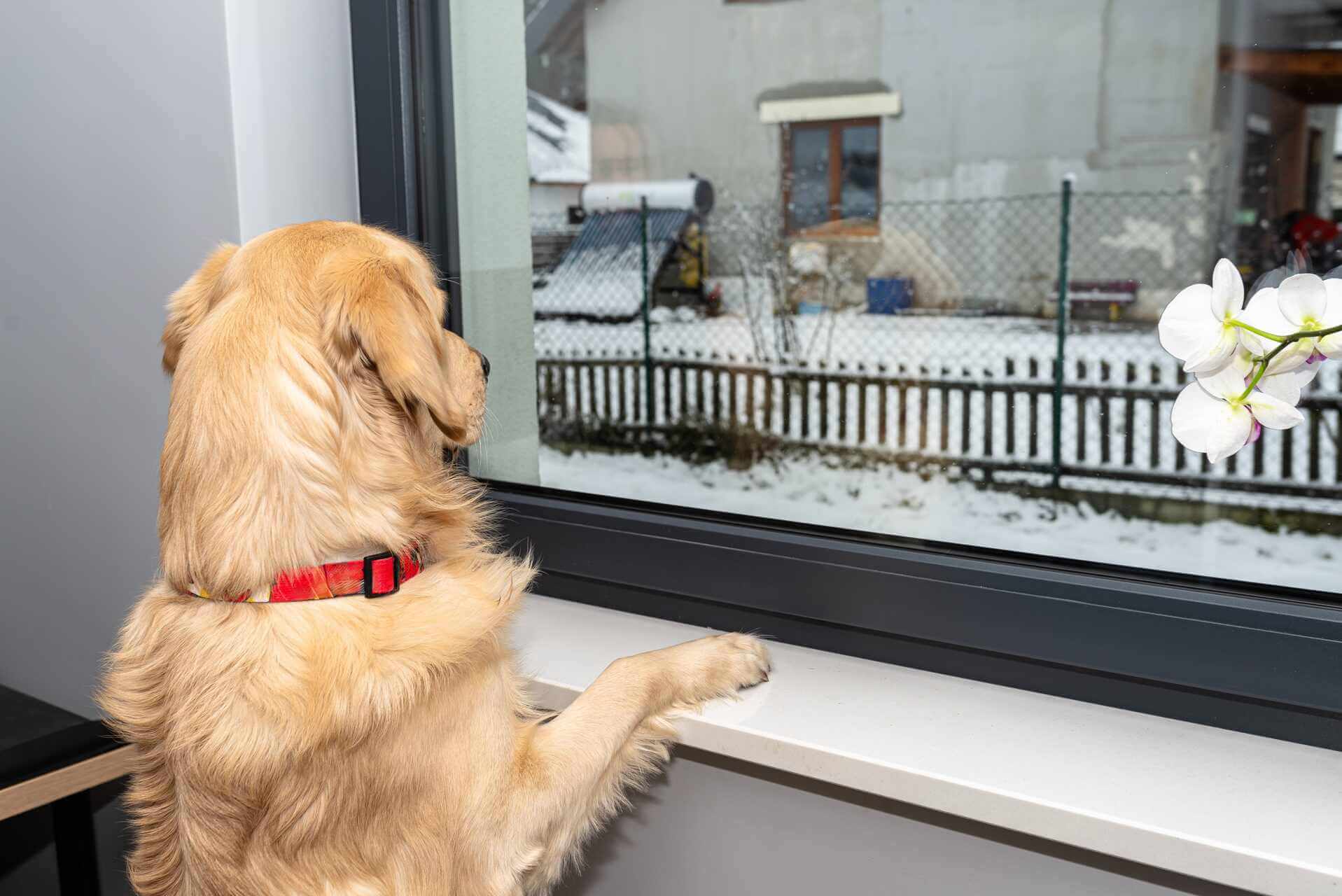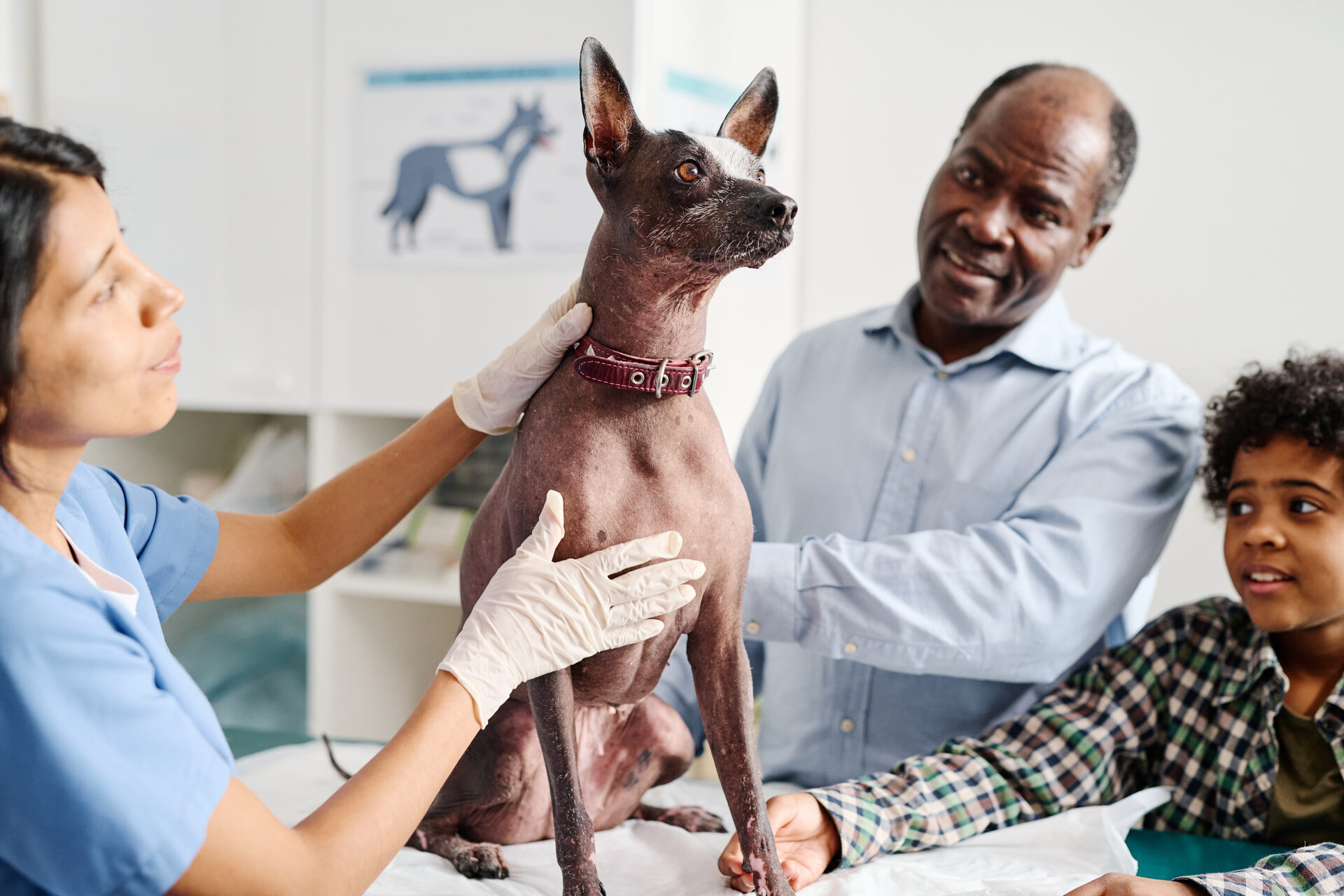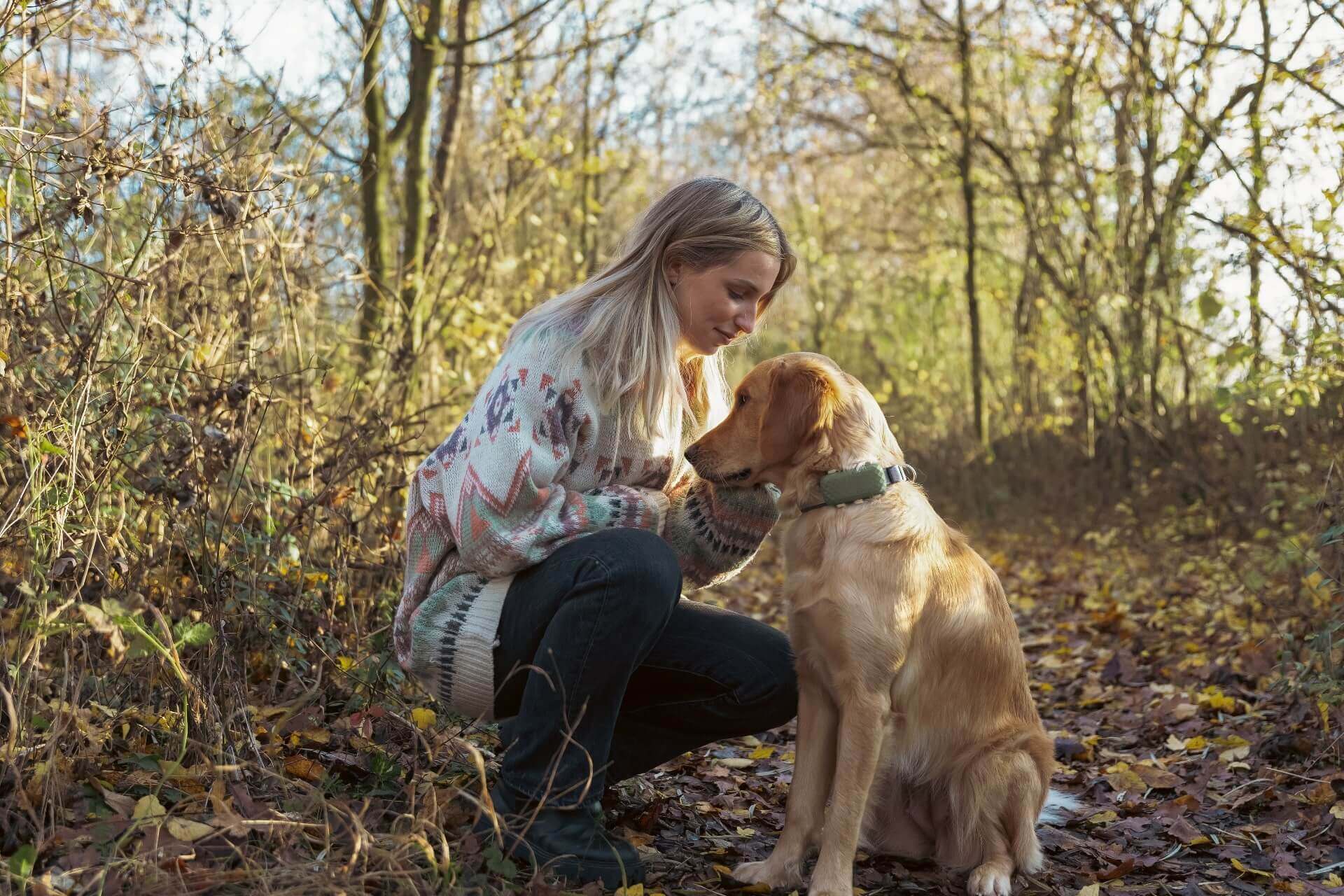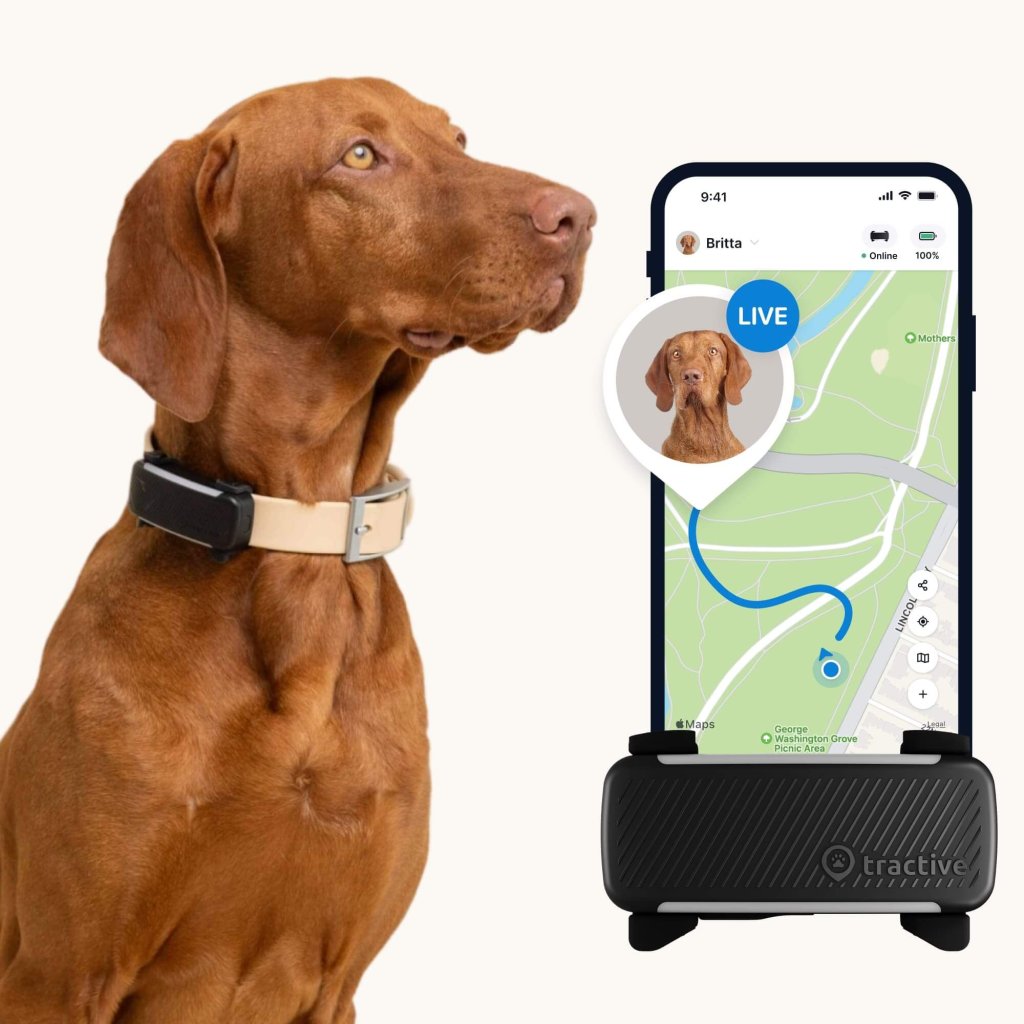Why Does My Dog Want To Go Outside Every 5 Minutes?
Boredom? Anxiety? Toilet trouble? Here's what to do if your dog keeps wanting to go outside, why they're doing it, and when to seek help.

You know the struggle: you just got back from a walk, settled down for five minutes, and then…there your dog is – nose nudging, tail wagging, or maybe whining plaintively. They want to go outside. Again. It’s enough to make you wonder, “Why does my dog want to go outside for no reason?” Let’s dive into some common reasons behind your dog’s desire for the great outdoors and where a smart dog tracker can help in an emergency.
Key Takeaways
Common reasons behind a dog that keeps wanting to go outside include boredom, excess energy, attention-seeking, anxiety, or simply habit. However, it can also signal underlying health issues, especially in older dogs.
Keep an eye out for potential health red flags like increased thirst/urination, diarrhea/vomiting, restlessness, or changes in appetite/energy.
You can address the behavior by keeping your dog active, sticking to a routine, and being firm with training. Your vet can help you figure out if anxiety is a root cause.
Safety first: Always ensure your dog has a collar with an ID tag and is microchipped. The Tractive smart dog tracker offers real-time GPS tracking for safety and health monitoring (including Health Alerts) to help you figure out behavioral causes or early health issues.

Always know your buddy is healthy & safe
Read moreWhy does my dog want to go outside?
When your dog keeps wanting to go outside, it’s rarely just about needing to relieve themselves. (Especially if they’ve just been out.) Here are a couple of reasons underlying it:
- They’re bored
If they’re not getting enough mental enrichment indoors, the outside world offers a smorgasbord of sights, sounds, and smells that are endlessly fascinating. - They’ve got energy to burn
Some breeds, especially working dogs, have boundless energy. If they’re not getting enough vigorous exercise, they’ll look for any opportunity to burn it off. Try these fun indoor games for dogs if you’d rather not head outside again. - They want attention
Your dog might have learned that asking to go outside is how to get your undivided attention. Yes, even if it’s just for a quick trip to the yard. Besides, If your dog has learned that whining by the door eventually gets them outside, they’ll keep doing it. - They may be in heat
If your dog hasn’t been spayed/neutered yet, their senses might be in overdrive. It might lead them to sniff out a potential mate nearby. Consider getting them fixed if caring for a new litter of puppies isn’t in the plans. - They’ve sniffed out “prey”
Dogs that have been trained to hunt and chase down other animals might have sniffed them out in your backyard or surrounding areas. So they might be itching to head out and chase down any “intruders.” - They’re feeling anxious or stressed out
For some dogs, the outdoors can be a comforting escape from something that causes them anxiety indoors. Think loud noises, a new routine, or even separation anxiety.
💡A smart dog tracker like Tractive can help you set up “safe zones” around your home or backyard – so you can help your buddy get some supervised outdoor time, without you leaving the comfort of your couch. If they venture out of this safe zone, you’ll get an escape alert to your phone, so you can intercept them.
Why does my old dog want to go outside every 5 minutes?
Senior dogs tend to be vulnerable to a bunch of health issues and behavioral changes as they grow older. If your dog keeps wanting to go outside and they’re a bit whiter around the whiskers, it could be because of:
- Anxiety or fear
Strange noises or shadows can make them feel uneasy, and they might seek comfort or safety outside. - Actually needing to go to the toilet
If they’re holding it all day, your senior dog might genuinely need more frequent breaks at night. Else, as dogs age, their bladder control can weaken, or they might develop conditions like kidney disease or diabetes. (All needing them to relieve themselves more.) - Cognitive decline (Canine dementia)
Just like humans, senior dogs can experience cognitive dysfunction. This might manifest as confusion, restlessness, or forgetting they just went outside, leading to repeated requests. - Discomfort or pain
Arthritis or other age-related pains might make senior dogs restless – especially at night. They might seek a change of scenery or a more comfortable spot outside.

When your dog’s behavior might signal a health concern
A sudden or significant increase in outdoor requests, especially if accompanied by other symptoms, warrants a vet visit. Like, for example, if your dog is:
- Drinking more water than usual
- Peeing more than usual
- Experiencing stomach trouble, including diarrhea or vomiting
- Showing signs of pain, including pacing, whining, difficulty settling, limping, or seeming reluctant to move
- Eating less than usual
- Drinking less than usual
- Seeming lethargic, or less active than usual
- Excessively licking parts of their body (which could be a means to relieve pain)
In these cases, head to your vet for a checkup. Your dog might be experiencing a health problem you might otherwise completely miss.
Steps you can take if your dog keeps wanting to go outside
Once you’ve ruled out a medical issue with your vet, make sure you’re keeping your dog well-exercised – both physically and mentally. Besides your regular walks and playtime, consider using puzzle toys, scent work, or even some indoor games to keep them occupied.
Staying regular with your dog’s training – especially for basic obedience commands – can also create a stable, predictable routine for them. Besides training, make sure you’re sticking to designated toilet break times and bringing them back in right away after.
Don’t be afraid to ignore some of your dog’s requests either. (We know, it’s hard refusing the big old puppy eyes.) If they’ve already relieved themselves, make sure they have something to keep them occupied indoors. Chew toys, kongs filld with treats, or even a comfortable, quiet space where they can relax all go a long way.
Finally, if you suspect anxiety to be the root cause, work with your vet or a certified dog behaviorist. They can help your best figure out if counter-conditioning, desensitization, or even medication can help best.

How you can let your dog outside – safely
Even with the best intentions, dogs can sometimes find a way to slip out. Always make sure they’ve got their collar and ID tag on. Their collar should fit snugly (two fingers should fit comfortably under it) and their ID tag should always be attached. The tag should include your dog’s name, your phone number, and ideally, your address. Always keep this information up-to-date.
Ideally, your dog should also be microchipped. A microchip might even be a legal requirement depending on where you live, so do make sure to check your local laws. (Or wherever you’re headed to on vacation.) Microchips are even more reliable than an ID tag, since it’s implanted into your dog’s skin and isn’t likely to fall off. Every microchip includes a unique ID number, which a vet or shelter staff can scan (if your dog gets lost and is taken in) and find your contact details. Remember to register the chip and keep your contact details updated with the microchip registry.
It’s also a good idea to keep your neighbors in the know, especially if your dog is prone to escaping. (But even if they’re not.) Make sure they have your contact information and ask them to keep an eye out. They might be able to spot your dog quickly if they get out and help guide them home.
We’d also recommend you regularly check your fences for any weak spots, holes, or areas your dog could dig under. Keep your gates securely latched, so your dog can’t just nudge them open. Coyote rollers on top of fences can help prevent them from jumping over. Else, burying chicken wire along the bottom can prevent them from digging under. Here are some dog fence ideas if you’ve got an escape artist at home.
Where a smart dog tracker can step in
You likely can’t keep your eyes on your dog every waking minute of the day. That’s where technology – like Tractive – can lend a hand. Strapped to your dog’s collar, your Tractive smart tracker can help you keep an eye on them, no matter where you are (or they are.)

With just a glance at your phone, you can now:
- Track your dog in real-time – in case they escape
If your dog does slip out in their quest for adventure, you can quickly locate them from your Tractive mobile app – preventing them from getting lost or into dangerous situations. This is especially comforting if your dog keeps wanting to go outside at night when visibility is low. Better yet, unlike an Apple AirTag, Tractive devices don’t need a network of compatible devices to work – nor are they limited by any range. - Ensure your dog stays in a designated “safe zone”
Which you can set up via your Tractive mobile app – and get an escape alert if your dog leaves it. Perfect for when you don’t have a physical fence or weird HOA requirements. - Spot potential health issues early
Your trusty Tractive device also monitors your dog’s activity levels throughout the day – and also their sleep quality. A sudden increase in restlessness or activity could indicate discomfort or extra energy. A drop in activity might signal pain or illness. Or, if your dog is constantly waking up at night to go outside, their overall sleep quality might decrease. In all these cases, you’ll get a Health Alert prompting you to get your buddy over to the vet for a checkup. - Keep an eye on your dog when you’re not around
Your tracker also includes a built-in Separation Anxiety monitor to alert you to signs of anxiety, like restless pacing or excessive barking. So if they’re indoors and want to be let out, you can take action before they get too antsy. (Like getting a neighbor to check in on them or even dropping by on your lunch break.)
With this data at hand, you can quickly and more easily spot any subtle shifts in your dog’s behavior that might explain their need to go outdoors. Whether it’s for more exercise, a developing health concern, or just a change in their routine.

Keep track of your dog’s daily adventures
Follow every step with unlimited range Live Tracking. Get alerts if they wander too far. Keep them happy & healthy with Activity & Sleep Monitoring. Get Health Alerts if something seems off.
Ultimately, figuring out “Why does my dog want to go outside every 5 minutes?” needs a little patience and detective work. By understanding your dog’s needs, ruling out health issues, and staying consistent with their training, you can help your furry friend feel more content, secure, and less obsessed with the front door.
And if you’ve liked this post, share it with a friend or a loved one – and let’s help build a safer, kinder world for our furry friends together.



